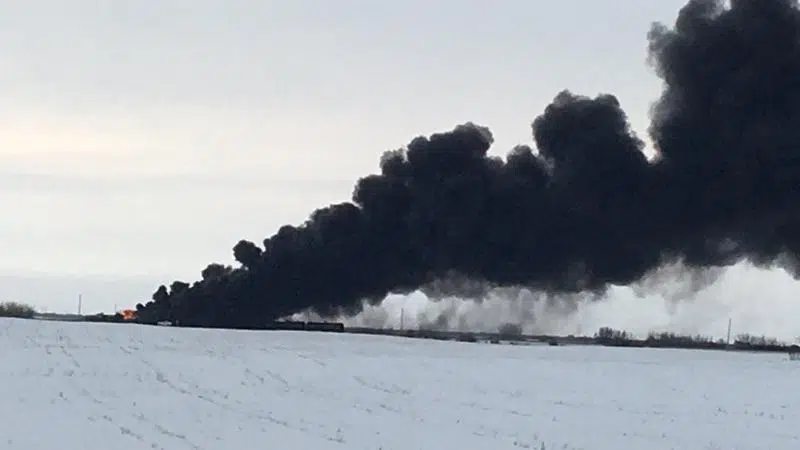
Guernsey looking for answers after multiple derailments, oil fires
After dealing with two derailments over the span of two months, residents in Guernsey are on edge when a train rolls through town.
They don’t have any answers as to why two separate trains derailed in December and February — the first west of town, the second east. A completed investigation report from the Transportation Safety Board (TSB) could take up to 600 days to make it to the public eye.
650 CKOM collected questions from the residents of Guernsey and posed them to agencies involved in the investigation, as well as to Garland Chow, a rail safety expert and business professor at the University of British Columbia.
Chow does not have direct knowledge of the Guernsey derailment investigation, but answered questions on a general basis of what could lead to a train coming off the tracks.


